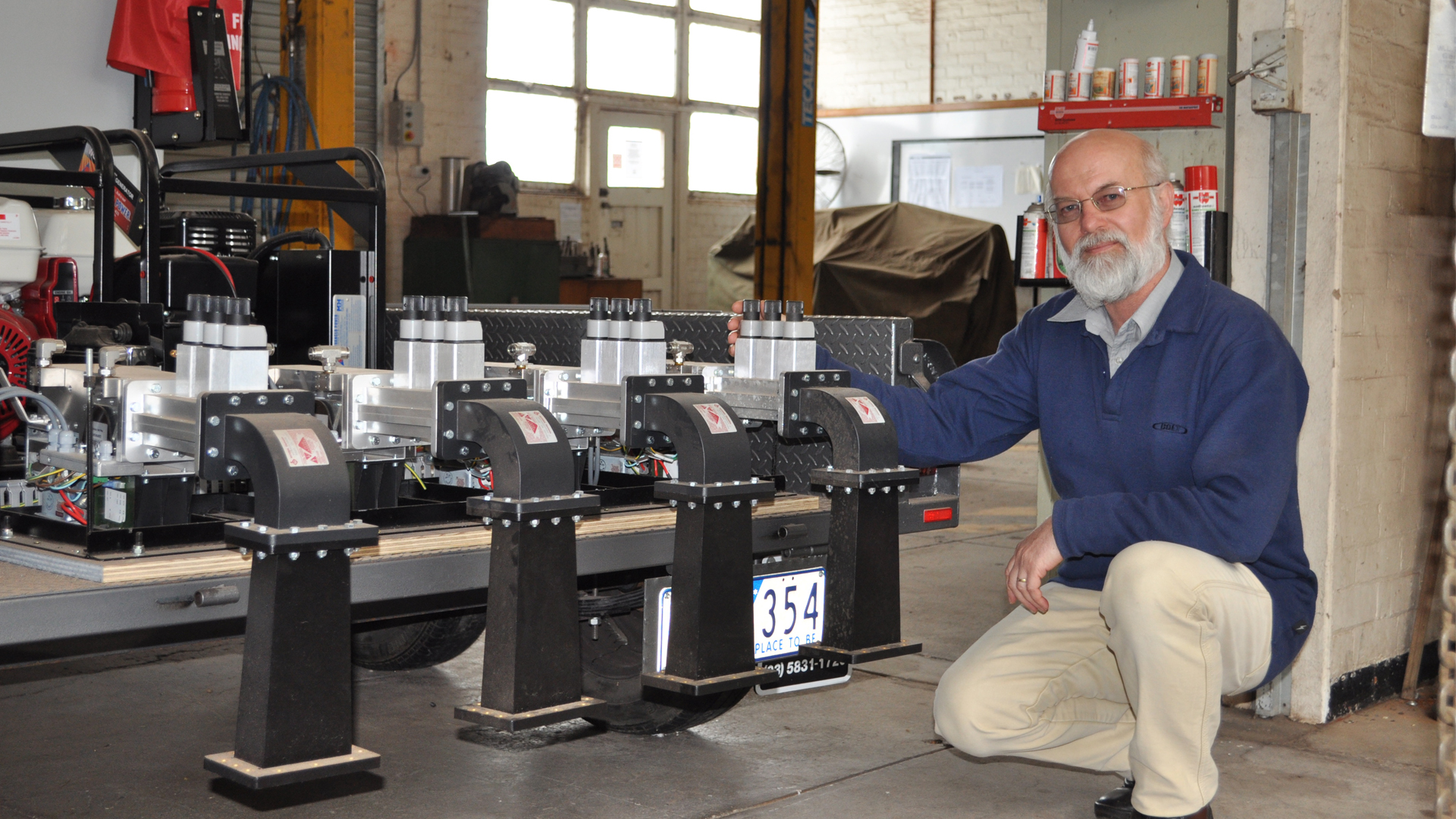Associate Professor Graham Brodie, from the Faculty of Veterinary and Agricultural Sciences, designed an antenna that can effectively channel microwave energy to kill weeds without the use of chemicals. Here, he discusses the inventing process, and why knowledge should not just sit on the shelf.
One of the biggest issues with weeds is that for quite some time we’ve been using chemicals to control them. That’s been very helpful, but there are two key side-effects of that. Firstly, weeds themselves are developing resistance now. There are quite a number of weeds that are almost impossible to kill with chemicals. And secondly, we're also unsure of the wider impact these chemicals have on the environment. But there is growing evidence that long-term and excessive use of chemicals is impacting both environmental and human health.
For that reason, there's been a push to try to find alternative ways to kill weeds. With my background in microwave heating I knew microwaves were a fast, efficient way of heating things, because they heat from the inside outwards. We can kill weeds with microwave heating, at far less energy expense than some of the more traditional ways of using heating to kill weeds. That was where the anti-weed antenna project got started.

The next challenge is to then make that commercially viable. You can use various antennas and devices to project microwave energy onto the ground, but the problem is that it tends to heat everything in its pathway. I wanted to confine that microwave energy just to the very surface of the soil, and to the weeds above it.
It was very old school research, in a way. You read about some ideas, you think about how you can change that to something a bit different and then with a bit of experimental work, demonstrate whether it will work. The original design I came up with was a device called a slow wave device. They’re actually used in electron particle accelerators. A colleague and I began to develop this idea and test it out, and ultimately proved it would behave the way that we hoped it would.
Grains Research and Development Corporation [GRDC] was a fairly logical choice for commercialisation, because they are involved in agriculture and were already looking for alternatives to herbicides for weed control. I put forward what was basically a ‘blue sky’ application for the development of microwave weed control. They accepted that, as a small project to start with. We generated some data from that small project, gave it back to them to consider and then started to generate larger projects with the GRDC platform. Once we got to the stage where the development of this new applicator came out of the last of these GRDC projects, it became very evident that this was the first potential step towards commercialisation. So, with a combination of interest from IPGroup and GRDC, the first round of funding was developed for the company GroWave. And GroWave is now the vehicle for the commercialisation of the microwave weed control technology.
I’m not a part of the GroWave company itself, because I thought it would be wise to allow the company to get up and running with somebody who knew more about business than I do. Having said that, I obviously have a lot of technical input into what’s going on. The company itself is a nice vehicle for develop new projects and products. Research is one part of the story, but development is very important, and quite a resource-intensive process.
From my perspective, as much as it can research should always have some practical outcome. I worked in industry before I came to academia, and so I had that mindset anyway. There must be some potential application in industry, and industry won’t accept something unless it’s at the semi-commercially viable stage. Commercialisation is the most logical step in taking the research from small batch to impact at a larger scale.
Universities are knowledge brokers, but if the knowledge only ever sits on somebody’s shelf it’s of no value to society. Pathways to try to make that knowledge more available, whether that be through entrepreneurial activity, or connections with industry or other ways, are all important.
The University of Melbourne is a good environment for innovation. But the connections with industry have traditionally not been as strong. The University is addressing that with many programs to support innovation starting up and running. Fifteen years ago, trying to develop industry connections took a lot of going around to various farmer groups, talking about new ideas and demonstrating what’s possible on a very small scale. The University is much savvier now at trying to take the know-how that it’s developing and turning that into commercial opportunities.
As told to Anders Furze
Want to learn more about what our researchers are working on and how we’re collaborating with innovation partners to adapt to our climate challenges? Visit the Climate Hub.
The University of Melbourne has announced the establishment of two new major investment funds dedicated to supporting Melbourne’s world-leading researchers to turn their extraordinary discoveries and innovation into commercial reality. Find out more about the University of Melbourne Genesis Pre-Seed Fund and Tin Alley Ventures.
First published on 15 December 2021.
Share this article
Keep reading
-
Catalyst: Alzheimer’s – Can we prevent it?
In ABC’s science program, Professor Cassandra Szoeke explains how lifestyle choices today may affect our chances of cognitive decline in the future.
-
Pursuit: How good cholesterol can keep women’s brains healthy
A healthy lifestyle keeps not only our bodies healthy, but our brains too. Research shows how this impacts on the very structure of a woman’s brain.
-
Pursuit: Can sunshine help your brain?
A landmark study shows regular physical activity is the number one protector against cognitive decline.